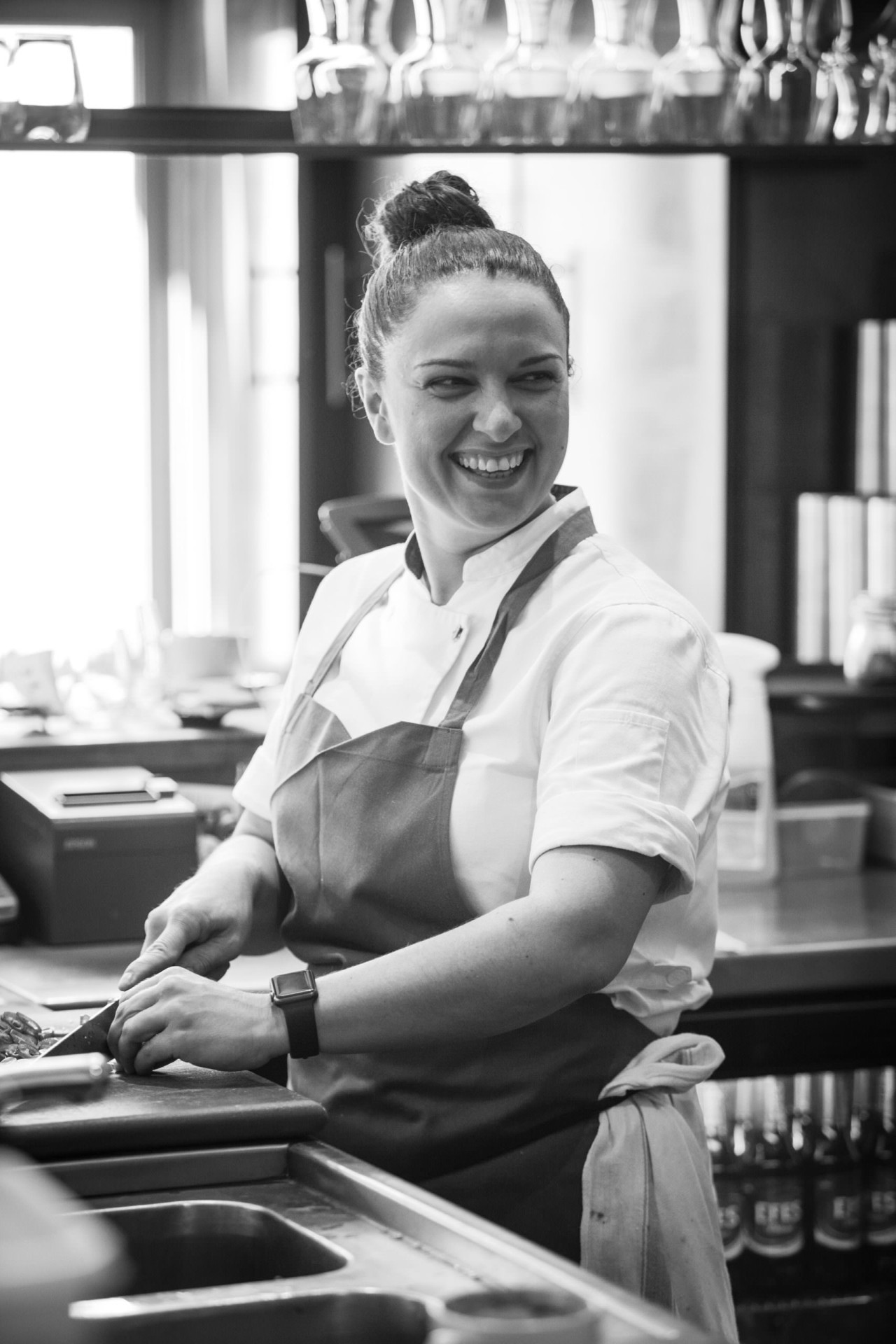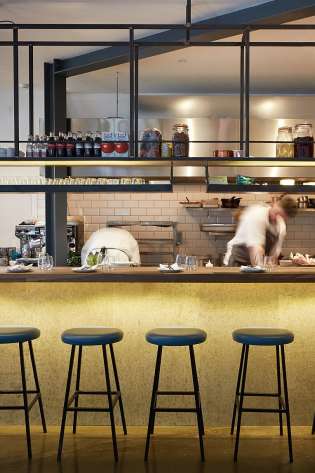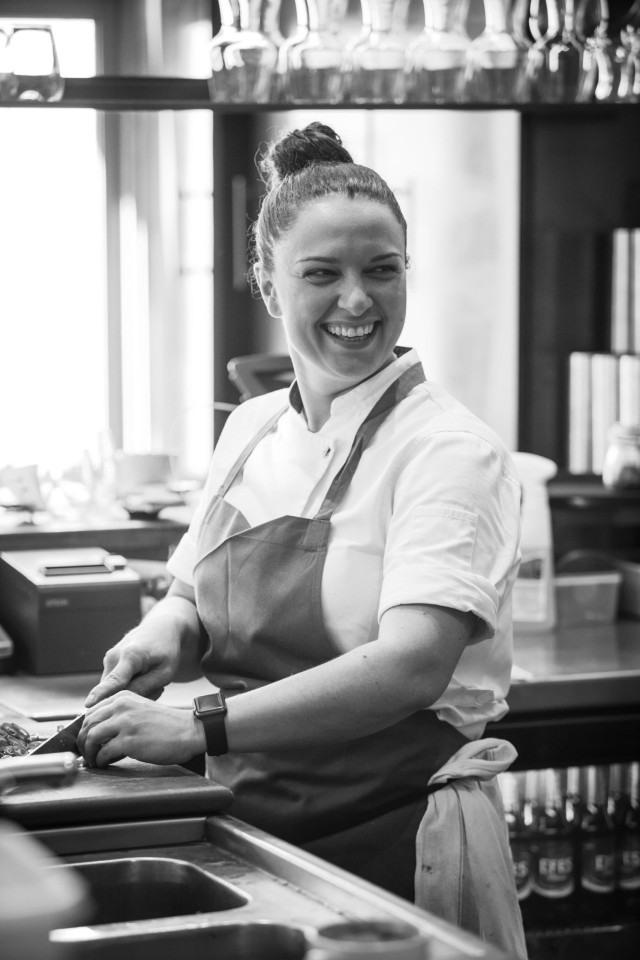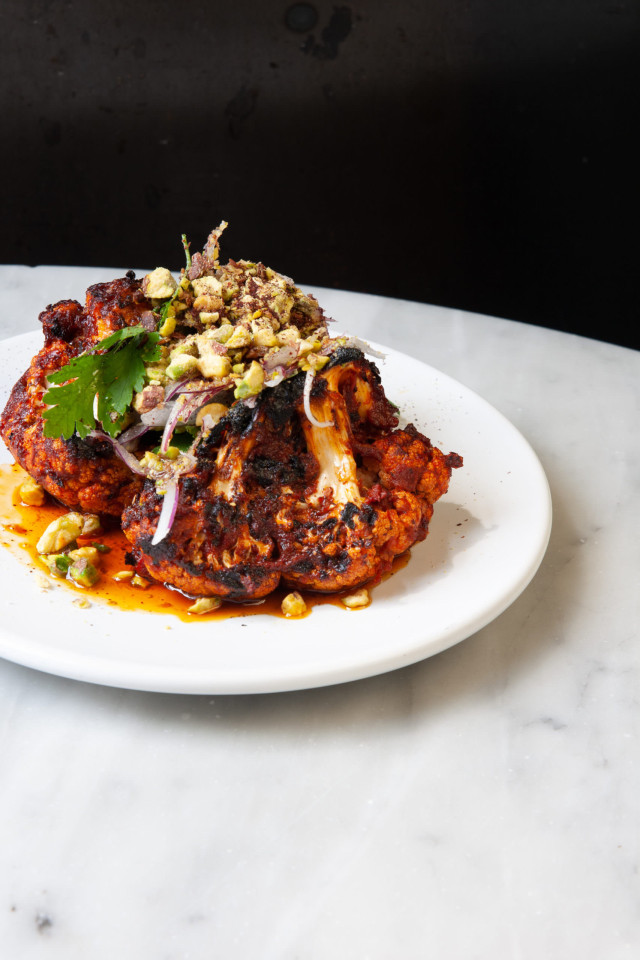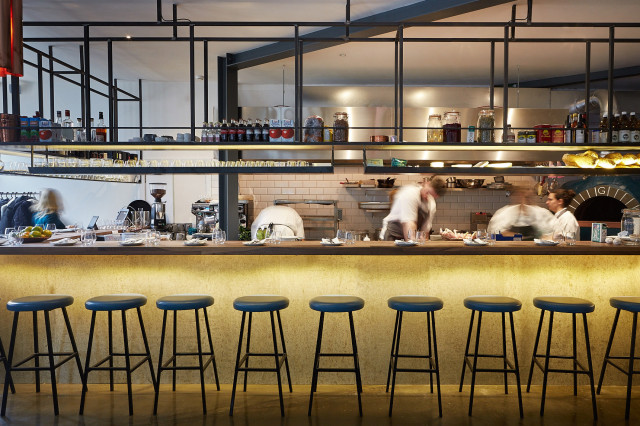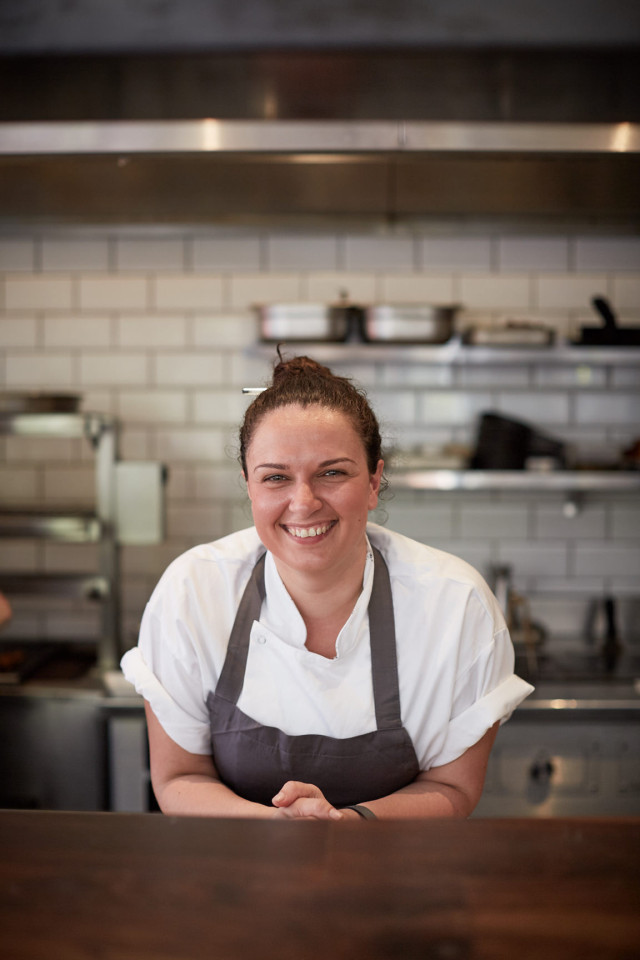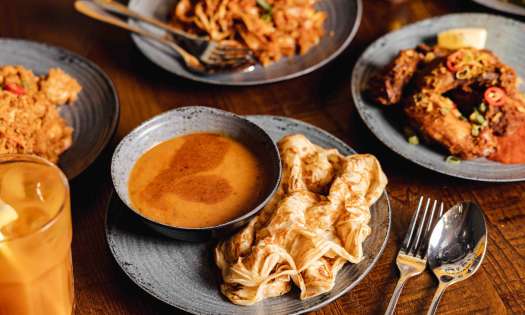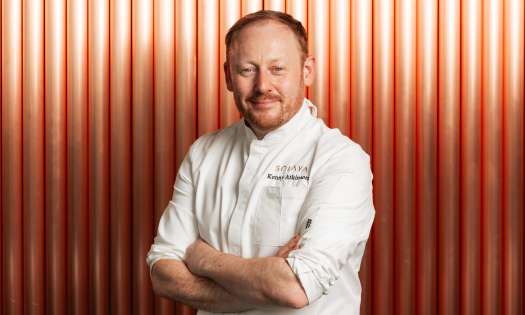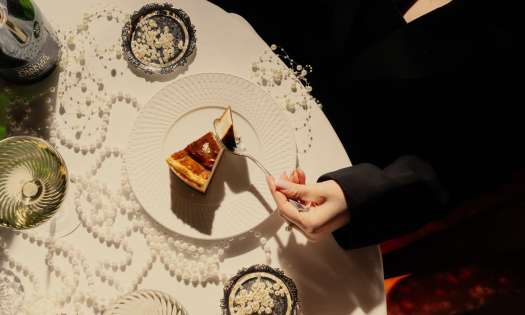“I wouldn’t say I always knew for certain, but I definitely had an obsession with food from a young age,” says cookbook author, chef, and restaurateur Selin Kiazim.
Her Shoreditch restaurant Oklava is a local favourite, with guests gathering around to devour her Turkish-Cypriot dishes fresh from the wood grill and stone oven. I’ve dined at Oklava multiple times and am always in awe at the layers of flavours and textures in Kiazim’s food. “I come from a food-loving—and food-sharing—background anyway; big family barbecues with tons of food are the mainstays of Turkish-Cypriot Sundays. I started cooking early on too—by the age of about 13, I was throwing dinner parties for friends, making my parents leave the house or the kitchen for the night. I would spend weeks preparing for these dinners, watching all the cooking programmes I could find and making notes on how to make old school things like crepe soufflés,” she shares. However, Kiazim didn’t automatically think about a career in hospitality and started off doing an Art foundation course. She soon realised her passions lay elsewhere and she got over her fear of the stereotypical chef’s life with long hours and aggressive bosses and found her calling in catering college.
Despite being a published author, winning the dessert course on Great British Menu, and having a loyal following, Kiazim wasn’t immune to the pitfalls that came with the past year and a half. “If I think back to that time, when we were in the thick of [the pandemic], I genuinely don’t know how we got through it. As an industry, and perhaps as humans too, we were faced with some of the biggest challenges to date. These were challenges we had never experienced and certainly didn’t have answers for. It was hard to keep my morale up, let alone that of our staff. It just was a constant battle to hold on to hope that it would all be ok. Being faced with the very real possibility of losing the business we had worked so hard for was soul-destroying.”
Now that the dust has settled and Kiazim has returned to her place behind the pass at Oklava, she’s starting to promote the latest thing she’s cooked up. “Ever since writing the first cookbook, Oklava, [which was] published in 2017, I knew I wanted to do a second. But I wanted to take my time coming up with the right idea. I didn’t just want it to be a book of recipes; I wanted it to be more than that.” I speak with Kiazim about how she and her team rode the wild waves of the pandemic and the launch of her newest book, Three: Using Acid, Texture, and Contrast to Redefine Your Cooking.
How did you manage to overcome the challenges facing the hospitality industry during the pandemic?
Having my business partner Laura by my side is what kept me going. I honestly think I would have thrown in the towel if I didn’t have her for support and decision-making. In the end we took it one day and one week at a time and found peace in knowing it was out of our hands to a certain extent. Until the government gave the green light for us re-opening in some shape or form, there was no point in us considering all of the if, buts and maybes; we learnt that very quickly after the first lockdown and the atrocious treatment of hospitality.
To be honest, what saved us to an extent was pretty much throwing the rule book out. The pandemic taught us it was time to put the business, the bottom line, and job safety for our staff at the very top of the list rather than doing things the way they have always been done. Things had to change in order to guarantee our survival and the survival of the industry. We scrapped the optional service charge and introduced set menus. We doubled down on no-shows and making sure our guests knew what a loss last-minute cancellations present for us. What we found is that we are blessed with guests and regulars that support us no matter what, and totally understood where we came from and the dire state our industry was left in by the pandemic. Having them back in the restaurant for the first time, enjoying the food and each other’s company, was such an amazing experience.
Much of your food is influenced by your heritage. Was it always easy for you to introduce your culture to others on a plate?
I have always had a huge amount of confidence in the deliciousness of the food and a sense of, I don’t know how anyone could eat this and not enjoy it. Obviously, I am biased, but the Turkish and Turkish-Cypriot food culture does have some absolute stunners of dishes. It also has such a breadth of flavours, techniques, and ingredients, which make it rewarding to work with. My aim is certainly also to show that this food culture has so much going for it, above and beyond the kebabs that people seem to automatically jump to in their minds when you say ’Turkish’.
While some dishes are a straightforward translation of my heritage and what I grew up eating, some dishes take inspiration from certain techniques or flavour profiles in Turkish cooking and include influences from other cuisines. I always try to make these dishes the very best example that I can, which actually takes a huge amount of research and time. They are perhaps a little harder to bring to life, but I believe that our customers can taste the heart and soul that goes into producing this food. I’m also very lucky to have a team who cook with love for the food.
Do you have a signature dish?
I don’t feel like my food can be defined by one dish. However, I do have a selection of dishes that are what you might call the “Oklava Classics”. Chief amongst them would be the chilli roasted cauliflower, red onion, parsley and pistachios. It was a dish I created many years ago. I came home from a trip to Istanbul with an incredible sun-dried hot pepper paste and some pistachios. One night I found myself in need of dinner and had, quite literally, a cauliflower, red onions, and some parsley along with that pepper paste and those pistachios. That dish was born by pure chance but it has stood the test of time. It’s a banger.
You've been a strong advocate for women in hospitality. Do you think the issues that have plagued women in the industry are improving?
If I’m going to be honest, yes and no. Certain aspects have improved over the years when it comes to the treatment of women in the kitchen. Certainly, more young female chefs are entering the profession and achieving amazing results, including opening their own restaurants and cooking absolutely amazing food. This says a lot about the growing confidence young women have about entering the industry and the place of absolute importance they have within it. However, on the other hand, it has to be said that opportunities to this day come easier for a male chef—including the TV appearances, the big awards, the lucrative openings. For years I never really wanted to highlight this topic; quite frankly, it’s boring and I would rather talk about food, my restaurant and all the great things this industry does have to offer. But it's an issue that won’t go away, and I have reached a point of wanting to speak out about it. I think it’s fair to say that this is something most female chefs struggle with. We feel like we don’t want to complain and should be grateful for what we have, but unfortunately there is still some work to do when it comes to appraising men and women’s work equally, and rewarding them for their work equally. This is a problem in other industries too, of course, and not specific to hospitality, but hospitality is what I know, and I do believe there is room to improve.
Tell me more about your new book and why you decided to write it.
I would love to say I just sat down and started writing and it all came to me in one giant stroke of inspiration. In fact, lockdown was the most uninspiring time of my life. The ideas were just not coming to me. After many brainstorming sessions, I hit upon a thought that saddened me slightly. What about those people, stuck at home, who don’t really have many cooking skills or don’t have many recipes in their repertoire, and feel like they need to follow a recipe down to the last gram? Those people, who now can’t go to a restaurant and who just don’t have the confidence to open the fridge and cupboards and make dinner with the ingredients they find there. This wasn’t such a random thought—my partner Steph is exactly that kind of person and struggles to cook anything without having a recipe to follow down to the last word. Perhaps this is why she leaves the cooking up to me most of the time.
My book is for those people. I want to give them the tools they need to create their own food, teaching them how we think as chefs without making it cheffy. This is how THREE was born. It revolves around the question: what does it take to make a great plate of food? For me, every time, it’s acid, texture, and contrast. Understand how they work and why they are there, and you’re on your way to cooking delicious food. This is why the recipes also come with loads of ideas and inspiration to take the recipe even further, in any direction you want. That’s the sort of confidence I’d like this book to give people.
What is the one kitchen tool or gadget you recommend all home cooks have?
It would have to be my trusted mandolin! Now, I know they are a little scary with their very sharp blades, but they do come with guards to protect your fingers and will beautifully slice your vegetables ten times better and ten times faster than either you or me will ever achieve on our own.
For someone who's intimidated by cooking, which recipe from your book would you suggest they try?
Slow-cooked Leeks and Oyster Mushrooms. This dish is the perfect place to start. It’s really very simple: cook the leeks, make a coriander dressing to stir in at the end, and cook some mushrooms. That’s it! It’s absolutely packed full of flavour—and it’s got acid, texture and contrast, of course—and above all, it's versatile and perfect for gaining confidence and experimenting with. It can be a meal in itself, but will also work as a perfect side dish for any meat, poultry, or fish. You could even toss it through some pasta or noodles for an extra-special weeknight dinner.
What is your number one tip for entertaining at home?
Prepare ahead of time, every time. Don’t do it all on the same day. That is a piece of chef’s wisdom that I would love to see used more in home kitchens. In restaurants, we are always preparing ahead of time as it’s the only way to get through service at speed! Obviously some things will need to be done on the day; a dressed salad will wait for no one. But things like slow-cooked dishes, sauces, dressings, purees and so on can all be made in advance. You can relax on the day and enjoy entertaining at home rather than being stressed out about how long it’s taking you, and perhaps you might find it’s quite a nice thing to do and do it more often.
When not at your own restaurant, where can we find you drinking and dining?
I like to try new places most of the time, and when it comes to new openings in London we are spoilt for choice. But I do keep a little black book of places to go—in practice, it’s just in my Notes on my phone—with Selin’s favourites for any occasions. There’s Perilla for date night, Sabor for an indulgent and exciting meal, Brat for Sunday lunch and always Hawksmoor to scratch the steak itch.
